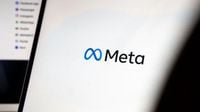For nearly five years, the Federal Trade Commission’s high-profile antitrust case against Meta Platforms (the parent company of Facebook, Instagram, and WhatsApp) has been a bellwether for the government’s efforts to rein in the power of tech giants. But on November 18, 2025, the long-running legal battle came to an abrupt end as U.S. District Court Judge James Boasberg dismissed the FTC’s lawsuit, declaring that Meta does not possess monopoly power in the social media market. The decision, delivered in an 89-page opinion, marks a significant setback for federal regulators and a victory for Meta, whose dominance in digital communication has been the subject of heated debate since its acquisitions of Instagram in 2012 and WhatsApp in 2014.
At the heart of the case was the question of how to define the social media market itself. The FTC originally argued that Meta had illegally maintained a monopoly by acquiring rivals and stifling competition, specifically within a market it termed “personal social networking.” According to Politico, the commission claimed that Facebook, Instagram, Snapchat, and smaller platforms like MeWe competed almost exclusively with each other, and that Meta’s control of Facebook and Instagram gave it overwhelming power since 2011. The FTC alleged that Meta’s strategy was not about competing on merit, but about buying its way to dominance.
But Judge Boasberg rejected this narrow interpretation. In his ruling, he wrote, “While it once might have made sense to partition apps into separate markets of social networking and social media, that wall has since broken down.” As reported by Android Central, Boasberg found that TikTok and YouTube now compete directly with Facebook and Instagram, and that including these platforms in the market calculation dramatically reduces Meta’s share below the legal threshold for monopoly power. “The Court ultimately concludes that the agency has not carried its burden: Meta holds no monopoly in the relevant market,” Boasberg stated.
The court’s analysis was rooted in the dramatic evolution of social media over the past decade. When Facebook first launched in 2004, it was a simple tool for college students to connect with friends. By 2025, however, the platform—and the industry as a whole—had been transformed by the rise of short-form video and artificial intelligence-driven recommendations. According to court findings, only 17% of time spent on Facebook now involves viewing content from friends, with the rest dominated by videos, particularly through Meta’s Reels feature. On Instagram, the figure drops to just 7%. These changes, Boasberg noted, have made Meta’s platforms “virtually—and deliberately—indistinguishable” from TikTok and YouTube in terms of user experience.
The FTC tried to present direct evidence of monopoly power, including Meta’s substantial profits, alleged increases in quality-adjusted prices through higher advertising loads, and claims of price discrimination. But Boasberg was unconvinced. He pointed out that high profits can just as easily be the result of efficiency or savvy management, not necessarily monopolistic behavior. And while users do prefer fewer ads, the evidence showed that reducing advertising by 80% would only increase time spent on Facebook by 3% among the most ad-sensitive groups, such as teenagers and young adults.
More persuasive, the judge argued, was real-world evidence of how consumers respond when a major competitor disappears. When TikTok was banned in India in 2020, Facebook usage spiked by over 60%, and Instagram usage roughly doubled. Similarly, during a brief TikTok outage in the U.S. in January 2025, Americans flocked to Instagram and Facebook. Meta even ran its own experiment, paying users to spend less time on its apps and observing that most of that time shifted to YouTube, followed by Instagram and TikTok. “Consumers treat TikTok and YouTube as reasonable substitutes for Facebook and Instagram,” Boasberg concluded.
Internal documents from the major players reinforced this point. TikTok’s own files described YouTube and Instagram as its top competitors, while Google acknowledged that TikTok and YouTube compete with Facebook. Meta CEO Mark Zuckerberg told investors, “Competition has gotten more intense, especially with the rise of TikTok which is one of the most effective competitors we have ever faced.” Instagram’s head, Adam Mosseri, described a “fierce competition” with TikTok to attract users under 30, and Meta’s COO Sheryl Sandberg insisted that the company’s acquisitions were meant “to improve and grow” the apps, not to neutralize rivals.
The court used “time spent” as the key metric for measuring market share, reasoning that in a world where all the major platforms are free, what really matters is how much of users’ attention each one commands. Even leaving YouTube out, Meta’s share was below the 70-80% threshold that courts traditionally require to establish monopoly power. As Boasberg noted, “The Supreme Court has never found a party with less than 75% market share to possess monopoly power.” In fact, Meta’s share appeared to be declining as TikTok continued to gain ground, a trend that weighed against the FTC’s case.
Meta’s response to TikTok’s rise was telling: the company has poured roughly $4 billion a year into developing Reels, its answer to TikTok’s short-form video format, and has fundamentally retooled Facebook and Instagram to keep pace. The platforms’ shift toward AI-driven video content has made them more like their upstart rival, blurring the lines between “social networking” and “entertainment” apps. Boasberg explicitly rejected the FTC’s claim that TikTok is merely an entertainment app, recognizing it as a direct competitor to Instagram and WhatsApp.
The ruling also touched on the shifting regulatory landscape. While the FTC’s case focused on Meta, federal agencies are simultaneously pursuing antitrust actions against Amazon and Google, and Apple faces its own trial over alleged smartphone market monopolization. Meanwhile, the Trump administration has launched a sweeping review of regulations that may reduce competition, reflecting growing bipartisan concern about the power of Big Tech.
Despite years of legal uncertainty, Meta’s business has flourished. In the second quarter of 2025, the company reported 22% growth in advertising revenue, reaching $46.6 billion, and boasted 3.48 billion daily active users across its apps. The court’s decision did not address whether Meta’s acquisitions of Instagram and WhatsApp were anticompetitive—only that the company does not currently hold monopoly power as defined by law. As Boasberg observed, “Like Heraclitus’s river, the rapids of social media rush along so fast that the Court has never even stepped into the same case twice. ... Each time it examined Meta’s apps, they had changed. The competitors had, too.”
The FTC’s alternative theory—that a subset of users values friend-sharing content so highly that no other app can substitute—also failed to persuade. Features with more friend content didn’t correlate with higher advertising loads, undermining the agency’s price discrimination argument. The court emphasized that monopoly power requires both market dominance and the ability to maintain it, and that in today’s fast-moving environment, neither condition applies to Meta.
Ultimately, the ruling underscores how quickly the social media landscape evolves—and how hard it is for regulators to keep up. As platforms like Facebook, Instagram, TikTok, and YouTube converge in features and compete fiercely for users’ attention, the old boundaries between markets have blurred beyond recognition. For now, at least, Meta’s grip on the digital world appears strong but not unassailable, and the government’s efforts to define and police tech monopolies face a daunting, ever-changing challenge.






